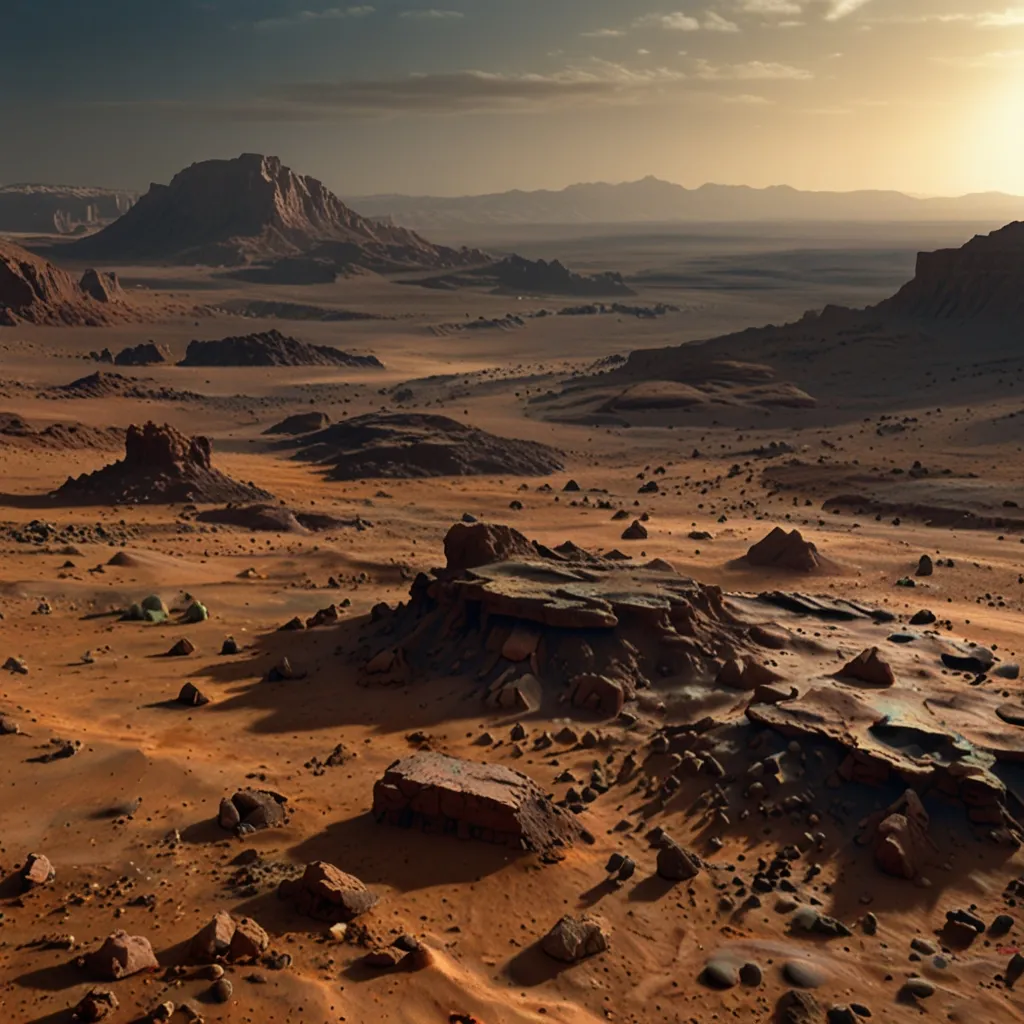Back on February 25, 2014, the Mars Curiosity rover had been hanging out on the Martian surface for about 554 solar days, clicking some seriously spectacular panoramic photos. When these images beamed back to Earth, amateur archaeologists could hardly believe their eyes. They thought they spotted something wild at Dingo Gap—a statue-like human effigy. This stunning find was just another in a line of strange, Earth-like objects captured by the rover’s cameras, including the likes of a sarcophagus, a Buddha statue, and even a cross.
In the vast expanses of Mars, it’s not uncommon to see—or think you see—objects that appear eerily similar to human-made sculptures. And let’s be honest, it’s tough to simply brush these observations off as mere coincidence. These objects look strikingly like sculptures crafted by human hands. It makes one wonder, could these be remnants of a lost civilization that experienced a catastrophic event? This question lingers in the air, whispering, “We were here.”
Ancient astronaut theorists have been buzzing about the possibility of artifacts and artificial structures on Mars since the first images came back from the Mars Viking mission in 1979. NASA, however, plays the skeptic card, attributing these perceived likenesses to a phenomenon called pareidolia—our minds conjuring up familiar patterns, like spotting shapes in clouds. Some imaging experts, though, aren’t fully sold on this explanation.
Joe White, with 25 years of photo restoration experience, is one such skeptic. He’s convinced that Mars holds artifacts that defy conventional explanations. He’s spent countless hours poring over rover images, which often capture close-up views of the Martian landscape. White argues that it’s possible to notice things that look like statue heads, stone blocks, and sometimes they even seem to have carvings or writings on them. In his view, NASA’s image processing techniques often diminish intricate details by resizing them, but his expertise lets him enhance and sharpen these photos, drawing out hidden features.
One of White’s standout observations was the eye and nose details on what he believes is a statue. He noted a clear mouth structure and something resembling an ear, alongside a long, narrow head shape that might be an elaborate headdress, albeit broken. This damaged statue, buried up to its chin in the Martian sands, could very well have more parts concealed under the surface. To White, it resembled structures one might find in Central or South America.
Considering the possibility of ruins from a lost civilization on Mars isn’t as far-fetched as it seems. These Martian structures bear an uncanny resemblance to ones found on Earth. There are Mars formations that look like pyramids, standing stones, and even structures similar to Stonehenge. One of the more intriguing parallels is a structure on Mars that looks like a Sphinx.
Around the region called Cydonia, several curious objects capture attention, including an area dubbed the “City.” Here lies the famous “Face on Mars” and a massive pentagonal pyramid amidst a cluster of other pyramidal forms. Some people have noticed that if you connect the apexes of these pyramidal structures, the layout mirrors the Pleiades constellation. This phenomenon isn’t isolated to Mars. Various ancient architectural monuments on Earth are also aligned to reflect the Pleiades constellation.
So, could these Martian structures indeed be real and artificially created? Many in the scientific community scoff at the idea, labeling it as impossible. But, we once thought water on Mars was impossible too, and that has been proven wrong. This brings us to the profound question: who or what civilization built these structures, and what fate befell them?
The conversation about lost Martian civilizations continues to tickle the imagination. It’s evident that there’s more to be discovered on the Red Planet, and each new image brings a fresh wave of curiosity and speculation. Could these findings point towards a deeper, more interconnected history of life beyond our Earth? Every glance at a Martian photograph stirs our sense of wonder and keeps the quest for knowledge alive.
As technology advances and our missions to Mars become more sophisticated, we may get closer to unraveling these mysteries. Each discovery, no matter how small, adds a piece to the puzzle, spurring us on to explore further. The spirit of human curiosity drives us to seek out the unknown and uncover the secrets of our universe. Whether it’s ancient ruins or natural formations, every new finding on Mars tells a story waiting to be deciphered.
In the end, the debate between skeptics and believers about artifacts on Mars is an extraordinary testament to our innate desire to explore and understand our surroundings. It’s an ongoing narrative that keeps us reaching for the stars, dreaming of new possibilities, and asking, “What if?” As we continue to send rovers, orbiters, and one day, humans to Mars, the Red Planet will no doubt continue to reveal its secrets, inch by intriguing inch.






